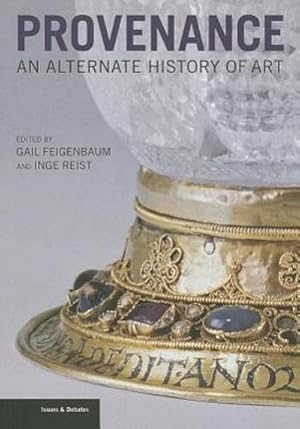getty trust publications feb 2013 (1 Ergebnisse)
Produktart
- Alle Produktarten
- Bücher (1)
- Magazine & Zeitschriften
- Comics
- Noten
- Kunst, Grafik & Poster
- Fotografien
- Karten
-
Manuskripte &
Papierantiquitäten
Zustand
- Alle
- Neu
- Antiquarisch/Gebraucht
Einband
- alle Einbände
- Hardcover
- Softcover
Weitere Eigenschaften
- Erstausgabe
- Signiert
- Schutzumschlag
- Angebotsfoto
Land des Verkäufers
Verkäuferbewertung
-
Provenance - An Alternate History of Art
Verlag: Getty Trust Publications Feb 2013, 2013
ISBN 10: 1606061224ISBN 13: 9781606061220
Anbieter: AHA-BUCH GmbH, Einbeck, Deutschland
Buch
Buch. Zustand: Neu. Neuware - This book goes beyond the narrow definition of the term provenance, which addresses only the bare facts of ownership and transfer, to explore ideas about the origins and itineraries of objects, consider the historical uses of provenance research, and draw attention to the transformative power of ownership. The result is a volume of essays that makes a strong case for recuperating provenance--what contributing author Anne Higonnet calls 'so many epic tales compressed into such dry lists'--for the history of art. Provenance attends to the social life of art, a work's biography subsequent to the moment of its origin. Provenance: An Alternate History of Art offers a broad perspective that ranges from ancient archaeology to conceptual art, that encompasses Europe, Asia, and the Americas, and considers a variety of media. The essays demonstrate in myriad ways how an owner's relationship with a work of art or, in varying degrees, with the object's previous owners, can change irrevocably the way the work will be perceived and understood by future generations. Limiting the scope of provenance to only the highly charged context of international legal custody battles or the painstakingly researched lists of names and dates in archives and catalogs is entirely insufficient to the richness of the subject. By considering provenance in its critical and theoretical dimensions, this volume endeavors to integrate this alternate narrative into art history.


